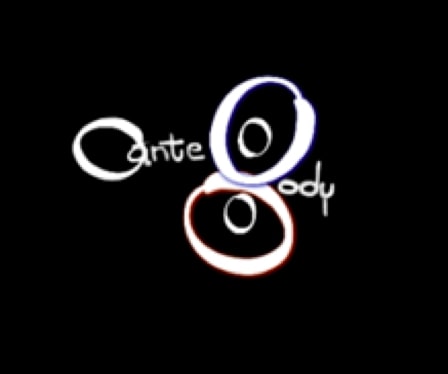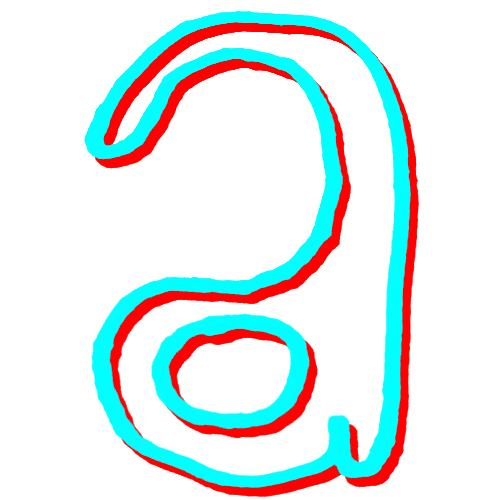Reclaiming the non-performative being: On Marwa Helal’s Ante body
Marwa Helal. Ante body. New York: Nightboat Books, 2022. 75 pages.
On the cover of Ante body, the title’s calligraphy deliberately expands the Latin alphabet. I say expand and not suppress or eliminate, for we’re now entering the domain of the “ante”. A circle is placed strategically before the letter “a” to evoke preexistence, while the letter “B”, shaped like the infinity symbol, suggests endlessness.

Marwa Helal is a poet who writes to dislocate. Born in Al Mansurah, Egypt, she immigrated to the USA at two years old. She uses this experience to connect with other migrant bodies and to explore immigration’s political and psychological effects. In this second collection of poetry, she extends beyond physical borders in order to access the historical archives of the body, while addressing the “surreal presence in the making of a living,” as Fred Moten describes “ante regulative force” in “Blackness and Nonperformance,” a lecture given at the MoMA in 2015. [1]
In the first poem, “why I so wise,” Helal draws a possible inspiration from Nietzsche’s chapter essay “Why I Am So Wise.” But contrary to Nietzsche, who used biographical elements to assert his Ecce Homo, Helal’s poem accesses the moment before the recontextualization and reconstitution of identity, a pre-performance, in an effort to relocate the self in an expanded territorial range: every person who has had to migrate, or settle (without exploitive impulse) in a foreign land knows that adaptation involves an ever-present rediscovery of self, and a blending, if not suppression, of the social and cultural knowledge of their birthplace: “on the floor of a dimly lit gym’s basketball/ court I learn pilates method was born in a/ prisoner of a war camp” (6).
Sara Ahmed, in On Being Included, describes the transition from being watched to becoming an observer as a political reorientation that redistributes spatial consciousness of the body [2]. For Helal, the initial symptom of such a transition is the loss of physical identity. She writes:
… “i didn’t/ leave my body when it would happen. but/ it was like i could see myself seeing them/ see me. and i must admit, i got a rise/ out of it: their feelings of insecurity. they/ were so obviously intimidated by the work/ they knew they could never do. and would/ never be able to make. this is how beasts are made.” (3-4)
Helal writes about erasure, objectification, patriarchy, and what is lost. We follow the speaker’s focus, shifting from her parents, to a cat, to a Syrian refugee: the awareness of the body transfers to the other. If love dissolves people’s boundaries, violence is the complete awareness that reality cannot change without action. When Helal says “to flee” (9), the verb dominates the page: flight might be the solution for survival, but for the ante body, life is the examination of the totality of an individual’s conduct — similar to the Egyptian concept of judgment after death. But if Anubis was responsible for weighing people’s hearts, who would be the one to judge his? Does a god have a soul or only a mind? The answer is somebody’s else murmur: the one who migrates does not simply observes from afar but remains ever mindful. Helal elaborates, expanding the ante body beyond Anubis: “i think it/ is easier to live/ destruction than to/ watch it. i live the consequences of that revelation.” (9)
The veil has been removed.
*
In “Pretend not to know what you know,” America is analyzed as a mediating influence. Helal cites insidious, everyday examples:
“michelle, a student/ studying arabic at the/ american university in/ cairo says: the small/ currency here is worth/ less than american toilet”. (11)
And on the following page:
“i didn’t come all the way to/ amreekah to watch jerry springer”. (12)
The object—in this poem’s case, the television—that creates cultural communion between America and Egypt, also represents Egypt’s cultural antithesis. National television industries in Egypt aired melodramas in particular, according to Lila Abu-Lughod [3], which was part of a program of “national consolidation” and “worked with modernist projects in two levels: intentionally, through disseminating in their storylines moral messages inflected by local and national political ideologies, thus attempting to set the terms of social and political debate; but also more subtly, through popularizing a distinctive configuration of narrative, emotion, and subjectivity.”
In this absence of otherwise encouraging visual and ideological narratives, Helal sees a Derridean specter of what yet haunts [4]. Still in “Pretend not to know what you know,” Helal considers Edward Bleiberg’s study of the widespread pattern of Egyptian statues with broken noses:
“napoleon shot the nose off the sphinx
they broke the noses off the statues to
hide their creators’ race
they broke the noses off to deactivate
the statues’ supernatural powers
napoleon overcompensated for his lack of
height
napoleon sought power war conquest
napoleon got a complex in his name
western psych (read: sike!) wants you to
think it was because of his height
but really, it’s because he was white” (15)
And,
“i have been/ mistaken and/ wondered / what else / I have/ mistaken?/ me, the one in a/ body that is always/ misread. i have / to become the illiterate/ one. and this is/ when i remember/ the prophet (pbuh)/ was also illiterate.” (26)
By becoming “illiterate” in this way, Helal starts to write from “that place where everything has already been written” [5]. It is in this moment that the text incorporates the poetic form she calls “the Arabic.” In her description, “the Arabic…vehemently rejects you if you try to read it left to right,” representing “the preservation of our native languages, the creativity in that preservation.” [6]
She writes:
“wild n wile I
poem this teach you when
state Avatar in it wrote I kids the tell
astral I
last I
me qualify can test DNA no” (37)
And,
“tacumeh friend my and me with walk a take let’s now
published get to how know to wants and grandma his about me telling is he
conversation the before
:turn a takes
convenient is it when black only are egyptians says he
anything say dont i and
ends black his where know i because
begins mine and
try would who seminar senior our in wife now his was it
...africa of part isnt egypt ،me tell to
see never you egypt of part the from im
me fool cant you
ourselves colonize we when hate i besides
+looted they while looking wasnt yall like
hand one with history country’s my whitewashed
other the with plantations the moved and
that love you why know dont you like
...much so cotton N-A-I-T-P-Y-G-E zero zero one” (44-45)
Helal has been pushing, or dislocating, the reader towards language’s potential to defy state power, and by inserting the English language into Arabic structure while filling the poetic corpus with her experiences as an Egyptian-American, she further redirects the erotic flux of speech, which often nurtures the enigma of the other, towards a culminating, Lacanian demystification: [7]
“ so were you
w up caught
make(r) my
model and
missed you
glory the
flight this of
creature mythical i
future the in far so gone [already]
own my made i
country
two only w
citizenship
:questions
؟real who
؟free who” (50)
It’s interesting to note how we begin with “why I so wise” and find at the end “Who Real ؟”, both titles dropping the most foundational verb of the English language. In the last sentences of this poem, which is, in fact, the beginning as it was written from right to left, Helal arrives at a realization:
“say i ،well
particular in one no to
backed ive time first the isnt this
disaster a of out us” (59)
I think here of Fred Moten’s notion, while writing on M. NourBese Philip’s Zong!, that being is multiple. [8] The ante body, which at first was the home of grief, is become a space for resurrections, the in-between where consciousness examines action, unlocking selves and persisting in the fecundity of the present, rather than residing in the perpetuation of historical labels and dispossessions.
*

In this photo taken by Helal, we see a portrait without a face. What’s abandoned confronts the reader, whose vision possesses the wall, the as-yet-not-defined. Helal speaks through this image, but not with her voice. Instead, she recalls Oum Kalthoum, the singer, songwriter, and film actress famously called “the voice of Egypt.” Through this artistic antecedent, Helal understands that “the body before the body worries, she will tear the veil.” (5) But ironically, this fear of being torn apart allows the reader to enter Helal’s textual ante body.
“We ate their gaze/ Our gaze ate them” (63), Helal writes, and I suddenly regain my appetite.
Notes and references
[1] Fred Moten: Blackness and Nonperformance, AFTERLIVES, MOMA LIVE, 2015, 25 September. Youtube.
[2] Sara Ahmed, On Being Included, Duke University Press, 2012. She writes about “how some bodies become understood as the rightful occupants of certain spaces” and “how some and not others become strangers”.
[3] Lila Abu-Lughod, “Egyptian Melodrama- Technology of the Modern Subject?”, in Media Worlds: Anthropology on New Terrain, University of California Press, 2002.
[4] Jacques Derrida, “Injunctions of Marx,” in Specters of Marx 9. Éditions Galilée, 1993.
[5] Marwa Helal, Letter to a Young Poet. The Scores, Issue 5. https://thescores.org.uk/marwa-helal/
[6] Ms. Magazine, “QA Poet Marwa Helal Arabic Form Poetry Preservation”, August 1, 2018, https://msmagazine.com/2018/01/08/qa-poet-marwa-helal-arabic-form-poetry
[7] Anthony Wilden, The Language of the Self – The Function of Language in Psychoanalysis by Jacques Lacan, Baltimore MD & London, The John Hopkins University Press, 1968.
[8] Fred Moten, Black and Blur (consent not to be a single being), Duke University Press, 2017. He writes, “Zong! does not represent the ones who become multiple; it just asks you to join them.”


